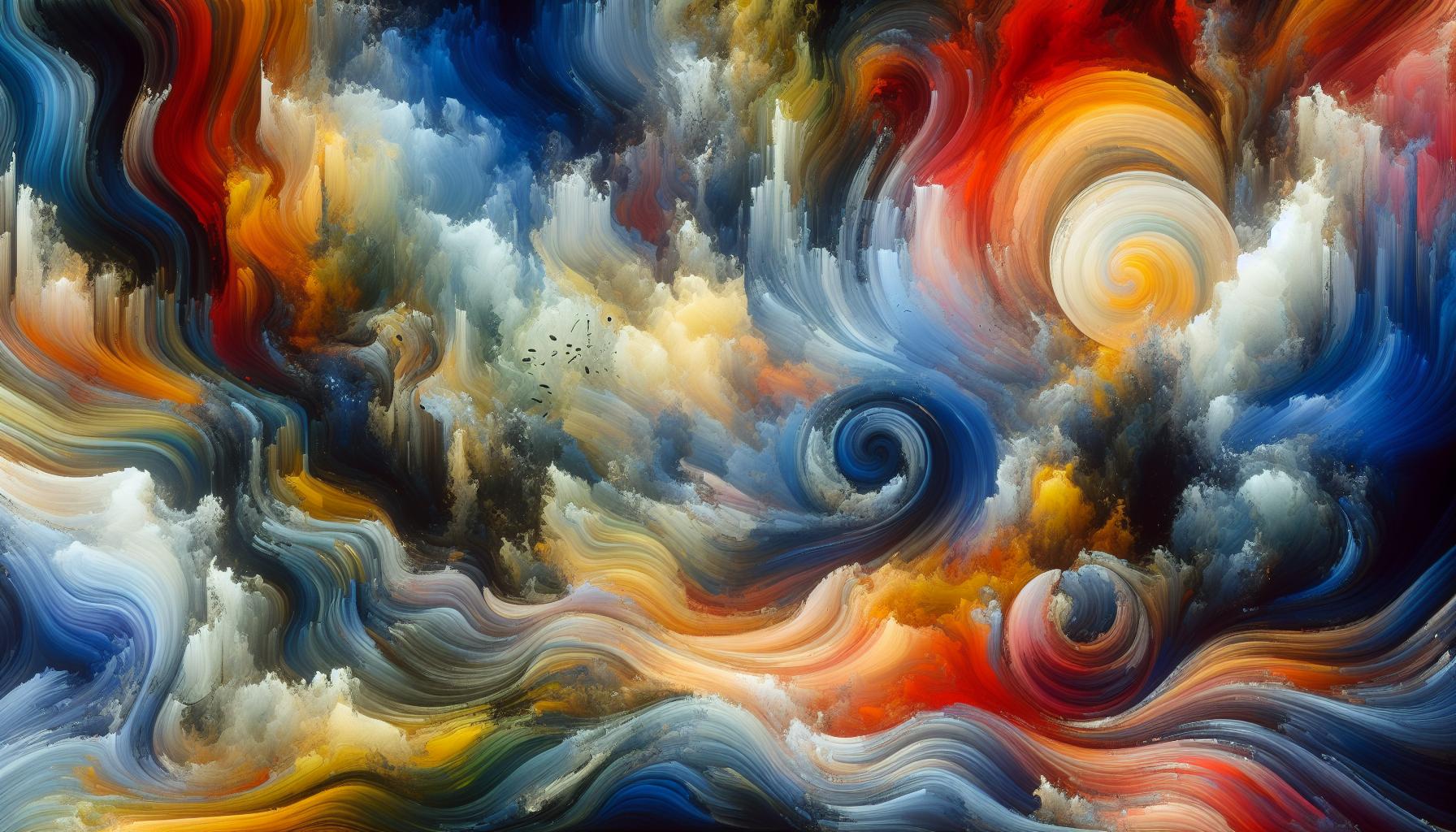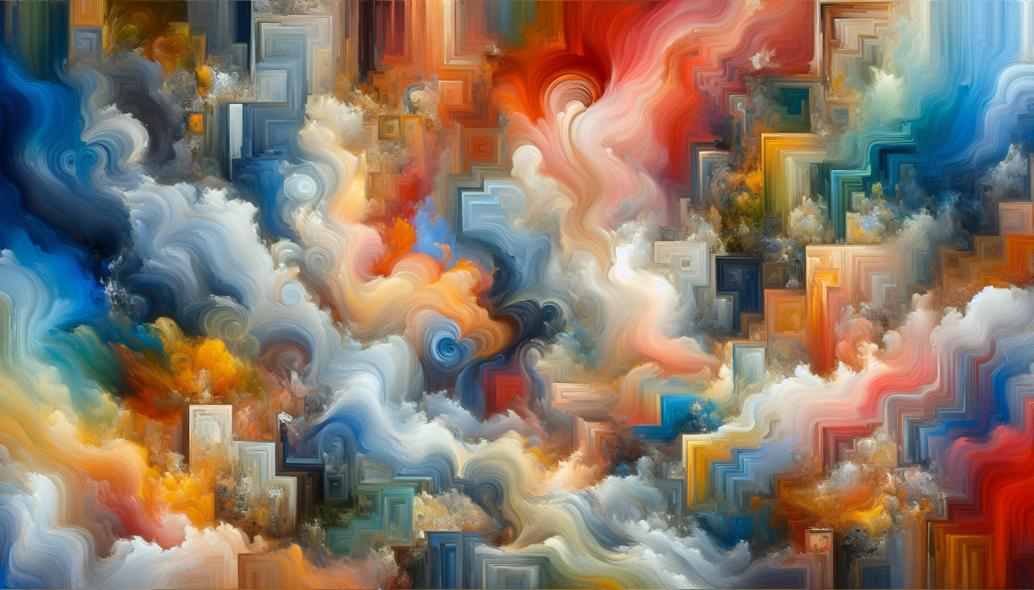Exploring Color Harmony in Abstract Art with Oil and Acrylic
Dive into the vibrant world of abstract art, where color harmony unlocks emotional depth and powerful expression using oil and acrylic techniques. Ready to explore the magic behind captivating compositions?


Exploring Color Harmony in Abstract Art with Oil and Acrylic
Color harmony in abstract art is a captivating journey through the language of hues and shades that can evoke emotions, provoke thoughts, and transform spaces. Whether you are an aspiring artist or an art enthusiast, understanding color harmony is crucial to exploring the myriad expressions within abstract art. In this blog post, we delve into the symphony of colors in abstract art, specifically focusing on oil and acrylic techniques, and uncover expert-level insights into achieving vibrant yet cohesive abstract compositions.
The Essence of Color Harmony
Color harmony is the art of combining colors in a way that is aesthetically pleasing and balanced. It plays a significant role in abstract art, where traditional subjects may not be present to guide the viewer. Instead, color and form become the primary communicators of the artist’s intent.
The concept of color harmony involves:
- The interaction of colors to create a unified visual effect.
- Balancing contrast and similarity within a palette.
- Evoking specific emotional responses.
In abstract compositions, achieving color harmony requires both intuitive feeling and technical understanding. Not only do artists have to decide on a pleasing balance, but they must also couple this with an understanding of how oil and acrylic mediums behave and interact.
Oil and Acrylic Techniques for Abstract Compositions
When it comes to abstract art, both oil and acrylic paints offer unique benefits and challenges. Oil paints, known for their richness and depth, allow for prolonged blending and subtle gradations. Acrylics, on the other hand, offer a faster drying time and versatility, making them ideal for layering and experimental methods.
Oil Painting Techniques
- Glazing: Layering transparent colors over a dry underpainting to create luminous effects and enhance color depth.
- Scumbling: Applying an opaque or semi-opaque layer with a dry brush, allowing underneath layers to peek through.
- Impasto: Using thick, textured strokes to add dimension and movement.
Acrylic Painting Techniques
- Pouring: Blob-like, fluid applications creating marbled effects, usually balanced with restrained palettes to avoid chaos.
- Dry Brushing: Dragging a dry brush with minimal paint to create textured, scratchy layers.
- Collage and Mixed Media: Incorporating materials to add complexity and depth to compositions.
Both mediums allow for a playful exploration of order and chaos within the abstract framework, offering endless opportunities to explore color in art.
Creating Abstract Compositions with Color Harmony
Building a successful abstract composition starts with understanding color theory's foundational elements, including the color wheel, color schemes (complementary, analogous, triadic), and contrast dynamics (value, saturation).
Here are essential steps to guide your exploration:
- Choosing a Color Palette Begin with a limited palette. Select a dominant hue to guide your composition, then carefully choose supporting colors to create balance. For instance, a complementary color scheme can add vibrancy, while an analogous scheme often results in a more serene harmony.
- Experimenting with Value and Intensity Value, the lightness or darkness of a color, plays a crucial role in creating depth. Maintaining a range of values prevents flatness, while adjusting intensity provides a focus. Higher intensity colors stand out more, becoming focal points within the piece.
- Exploring Form and Balance Abstract art often relies on shapes and patterns to complement color harmony. Consider how geometric forms or organic shapes interact with your palette. Balance is key—scale, proportion, and distribution of elements influence overall harmony.
- Layering Techniques Incorporating layers can drastically affect the perception of color in your art. Utilize each layer to build upon previous colors, adding depth and richness. Oil and acrylic mediums alike offer opportunities to layer transparently or opaquely, affecting the interplay of colors beneath.
- Experimentation and Intuition Abstract art thrives on experimentation. Trust your instincts, and don't shy away from unconventional pairings or techniques. Some of the most harmonious works arise from unexpected discoveries. Artists develop a unique sense of color harmony over time, one that is deeply personal and reflective of individual style.
Integrating Theory with Practice
Practical application of color theory within abstract compositions is imperative for creating works that resonate both visually and emotionally. Artists learn through experimentation, gaining an intuitive sense of color through practice, often described as an "eye" or "feel" for color. It’s important to:
- Engage in regular practice and exercises focusing on color mixing, layering, and balancing.
- Critique and analyse both your work and that of others, identifying what is successful or needs adjustment.
- Embrace feedback from peers and instructors to broaden your understanding and approach.
Conclusion
Exploring color harmony in abstract art with oil and acrylic paints is both an intellectual and emotional endeavor. It merges technical skills with intuitive creativity, guiding artists to craft compelling abstract compositions that engage and inspire. By understanding and applying principles of color harmony, artists can push the boundaries of abstract art, creating works that speak volumes through their vibrant silence.
Whether you are picking up a brush for the first time or refining your technique, remember that the journey to mastering color harmony is as rewarding as the vibrant images it will allow you to create.
Happy painting, and may your adventures with color fill the canvas with life and emotion.

